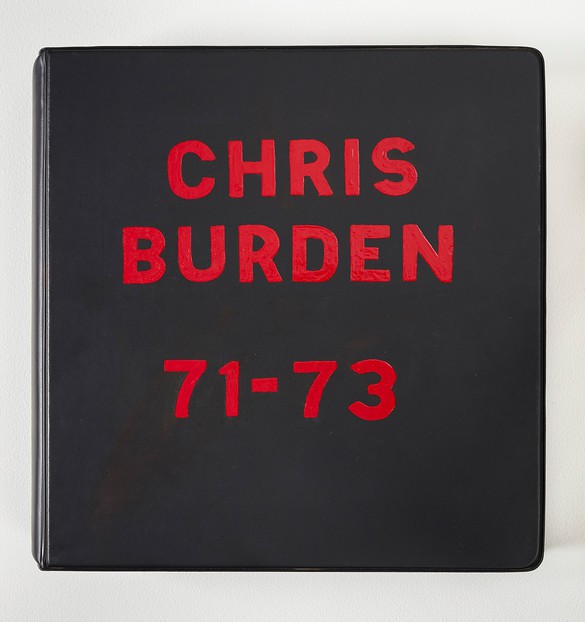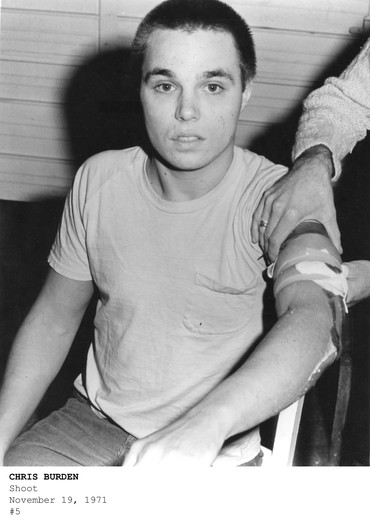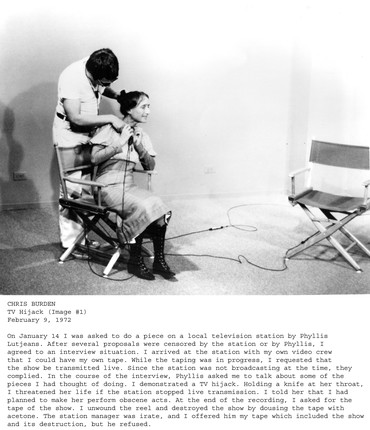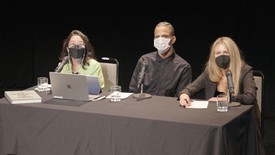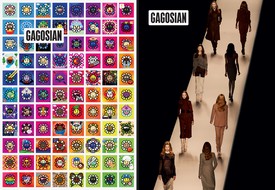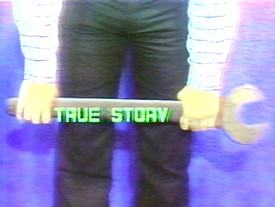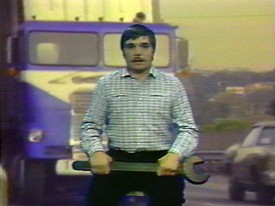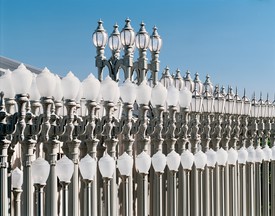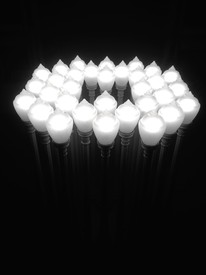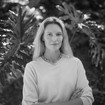
Sydney Stutterheim, PhD, is an art historian and writer whose research focuses on postwar and contemporary art. She joined Gagosian in 2018. Photo: Graham Tolbert
In 1974, Chris Burden released his Deluxe Photo Book 1971–73, a self-published catalogue of twenty-three early performances represented by concise narrative descriptions of the works coupled with black-and-white documentary photographs. Considering it both an independent art object and a record of his early generative work, Burden created the book to archive his ephemeral performances and commercial television projects, which were often not documented in other formats. Included are Burden’s first-hand descriptions and documentation for some of his best-known and most influential performances, such as Shoot (1971), in which he was shot in the arm by a marksman, and TV Hijack (1972), wherein he took an interviewer hostage by knifepoint on live television.
Independently published and produced in an edition of fifty with ten additional artist’s proofs, the Deluxe Photo Book is an important document for more thoroughly understanding Burden’s artistic practice and career. The works included in the book span from Five Day Locker Piece (1971), which was staged at the University of California at Irvine as part of Burden’s MFA final exhibition where the artist lived in modified lockers, to his TV Ad (1973), a project where Burden purchased commercial airtime on a local Los Angeles television station in order to run a ten-second clip of his earlier performance Through the Night Softly (1973), showing himself crawling bare-chested across a downtown Los Angeles street that was covered in broken glass. As such, this book offers necessary insight into how Burden saw his own artworks transform and develop in a few short yet formative years.
Combining fifty-three images taken by various photographers, such as Alfred Lutjeans and Gary Beydler, with short paragraphs describing the works, Deluxe Photo Book 1971–73 is bound in a loose-leaf binder inscribed with the words “Chris Burden 71–73” hand-painted on the cover. The book is an extraordinary document in that it is not only one of the few comprehensive self-published catalogues made by a performance artist in his or her early career, but also that Deluxe Photo Book occupies a notable position within the broader legacy of artist’s books.
Deluxe Photo Book was released in the wake of a series of sensationalist articles about Burden’s performances, including the notorious 1973 the New York Times article “He Got Shot—For His Art.” Despite Burden’s repudiations of these readings of his work, as articulated in various interviews from this period onward, the media focused on the extremity of Burden’s actions in which he was often subjected to pain and suffering on his body. As Burden himself explained: “those first articles in Esquire, Newsweek, the LA Times, and the interview on Channel 9 in LA. […] It pisses me off when they only take the first slice, the first level. ‘Chris Burden, man who walks through glass…’ I mean, come on! It’s true I’ve done some of those things, but I’m not doing them as a circus act.” Deluxe Photo Book serves as a counter argument to such claims, prominently including documentation of other aspects of his work that reformulate perceptions regarding the artist’s intentions and conceptual approaches. For example, one could contend that Burden’s inclusion of grayscale photographs deflected attention from the intensity of violence that was sometimes involved in the principal action, given his remarks in a 1975 interview regarding his work Through the Night Softly that he “shot the film in black-and-white because I knew that people would get off on [blood] and that’s not what it was about.” Moreover, Burden often included multiple images as documentation for a single performance, as can be seen in the accompanying photographs of the audience helping the artist after he was accidentally injured more severely than expected during Shoot. Burden’s addition of these images is critical as it lends support to his claim that “the violence part really wasn’t that important, it was just a crux to make all the mental stuff happen… the anticipation, how you dealt with the anticipation. Physically it was no big deal.”
Artwork © 2018 Chris Burden/licensed by the Chris Burden Estate and Artists Rights Society (ARS), New York; About Photography, Gagosian San Francisco, April 24–June 23, 2018.
